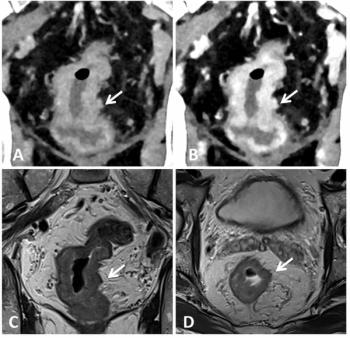
Biomedical research in Oregon gets boost from 12T MR scanner
A new 12-ton, 12T MR scanner will help researchers in Oregon delve more deeply into the origin and treatment of disease. The ultrahigh-field scanner, which will be used for human health studies in small animals, joins a 7T system purchased earlier this year.
A new 12-ton, 12T MR scanner will help researchers in Oregon delve more deeply into the origin and treatment of disease. The ultrahigh-field scanner, which will be used for human health studies in small animals, joins a 7T system purchased earlier this year.
Investigators at the Oregon Health and Science University in Portland will use the 12T scanner to study neurological disorders such as multiple sclerosis, Alzheimer's disease, and stroke.
The 12T scanner's magnetic field is 120,000 times stronger than that of the Earth. It will help researchers measure water movement in the brain, according to William Rooney, Ph.D., a staff scientist at OHSU's Advanced Imaging Research Center. These studies will assist in a greater understanding of the development of brain tumors and diseases such as MS.
Dr. Edward Neuwelt, a leading blood-brain barrier expert, said the 12T magnet will help his team at OHSU better understand the barrier, which prevents toxins from circulating into the brain. Such knowledge is necessary for improving chemotherapy for brain tumors.
Neuwelt and colleagues have designed new methods for MRI visualization of white blood cells in the brain. The ultrahigh-field scanner should shed knowledge on the impact these immune system warriors have on the brain.
The new magnet is one of only two in the world of its size and kind. The National Institutes of Health has the other 12T small-bore MR system. (The University of Florida has a 12T system that is less compact.)
OHSU's 7T system, delivered earlier this year, will be used for both animal and human diagnostics. The 7T system, at 60 tons, weighs five times more than the new 12T scanner.
Along with a 3T scanner, the 7T scanner will expand the functional capabilities of the Advanced Imaging Research Center while contributing to translational research in neuroscience, cardiology, cancer, diabetes, and other areas, said center director Dr. Charles Springer.
For more information from the Diagnostic Imaging archives:
Newsletter
Stay at the forefront of radiology with the Diagnostic Imaging newsletter, delivering the latest news, clinical insights, and imaging advancements for today’s radiologists.



























